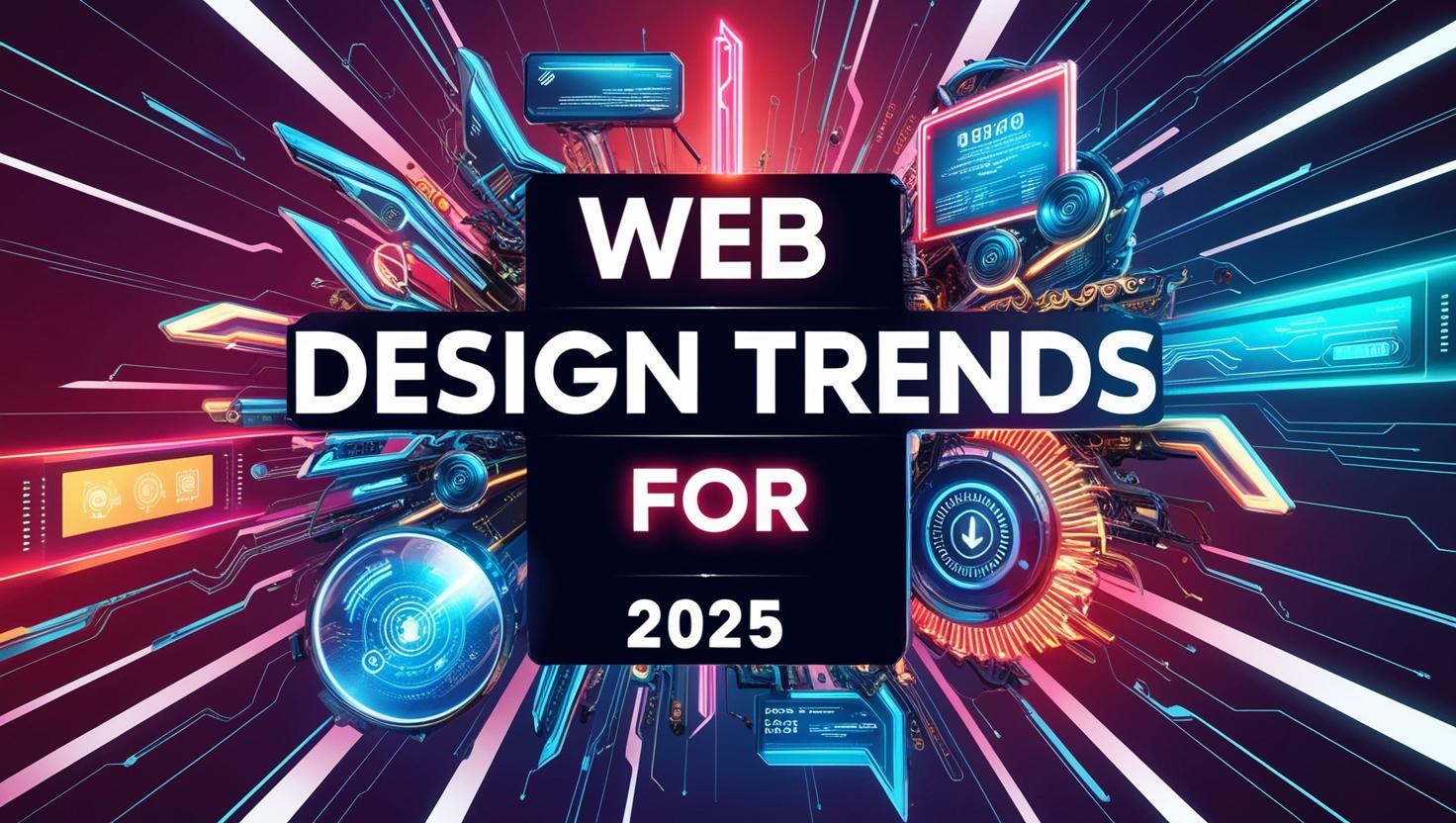Web Design Trends to Watch in 2025
As we venture into 2025, the realm of web design is undergoing a transformative shift, embracing innovation and user-centric approaches. Staying abreast of these trends is crucial for designers, developers, and businesses aiming to create engaging and effective digital experiences. Let’s delve into the key web design trends set to define 2025.
1. AI-Powered Personalization: Crafting Unique User Journeys
Artificial Intelligence (AI) has evolved from a supplementary tool to a central component in web design. In 2025, AI-driven personalization enables websites to dynamically adjust content, layouts, and visuals based on individual user behaviors and preferences. This level of customization enhances user engagement and fosters a more intuitive browsing experience.
- Designer Insight: Integrating AI algorithms allows for real-time analysis and adaptation, ensuring content remains relevant and appealing to each visitor.
- User Benefit: Visitors encounter a tailored web environment that resonates with their interests, increasing satisfaction and retention.
2. Immersive 3D Experiences: Adding Depth to Digital Interfaces
The incorporation of 3D elements is revolutionizing web aesthetics, making interfaces more interactive and captivating. From virtual product displays to engaging storytelling, 3D graphics provide a richer user experience.
- Example: E-commerce platforms can utilize 3D models to offer virtual try-ons or detailed product views, enhancing the shopping experience.
- Design Tip: Optimize 3D content to maintain quick load times and ensure compatibility across various devices.
3. Sustainable Web Design: Prioritizing Eco-Friendly Practices
With growing environmental awareness, sustainable web design is gaining prominence. This approach focuses on reducing the carbon footprint of websites through efficient coding, optimized media, and green hosting solutions.
- Key Practices:
- Implementing energy-efficient hosting services.
- Minimizing resource-intensive scripts and plugins.
- Streamlining code to enhance performance and reduce energy consumption.
- Why It Matters: Eco-conscious users are more likely to support brands that demonstrate environmental responsibility, making sustainability a competitive advantage.
4. Voice User Interfaces (VUI): Facilitating Hands-Free Interaction
The proliferation of voice-activated technologies is influencing web design to incorporate Voice User Interfaces. VUIs offer an alternative navigation method, improving accessibility and user convenience.
- Potential Applications: Users can perform searches, complete forms, or navigate websites using voice commands, enhancing usability for individuals with disabilities or those multitasking.
- Pro Tip: Combine VUIs with traditional navigation to accommodate diverse user preferences and ensure a seamless experience.
5. Adaptive and Responsive Typography: Enhancing Readability Across Devices
Typography is becoming more flexible, with fonts that adjust to various screen sizes and user settings. Variable fonts enhance both aesthetics and readability, providing a consistent experience across devices.
- Trendy Options: Utilize fonts that can modify weight, width, and other attributes dynamically to suit different display environments.
- Pro Tip: Balance creativity with legibility to ensure text remains clear and accessible to all users.
6. Augmented Reality (AR) and Virtual Reality (VR) Integration: Bridging Digital and Physical Realms
AR and VR technologies are becoming integral to web design, offering immersive experiences that blend digital content with the real world.
- Real-World Applications: Retailers can allow customers to visualize products in their own space using AR, while VR can provide virtual tours or simulations, enriching the user experience.
- Design Challenge: Ensure that AR and VR features are intuitive and do not require additional hardware, making them accessible to a broader audience.
7. Minimalist and Brutalist Aesthetics: Embracing Bold Simplicity
In response to information overload, minimalist and brutalist designs are gaining traction. These styles focus on simplicity and functionality, using clean lines and straightforward layouts to convey messages effectively.
- Popular Formats: Utilize ample white space, monochromatic color schemes, and grid-based layouts to create a clean and focused interface.
- User Tip: Test different minimalist designs to determine what resonates best with your audience, ensuring clarity and ease of navigation.
8. Dark Mode Design: Offering Alternative Viewing Preferences
Dark mode continues to be a popular feature, providing an alternative viewing option that reduces eye strain and conserves battery life on devices with OLED screens.
- Benefits:
- Improved readability in low-light environments.
- Enhanced focus on content by reducing screen brightness.
- Design Tip: Implement a toggle option, allowing users to switch between light and dark modes based on their preferences.
9. Motion UI and Microinteractions: Creating Engaging User Interfaces
Incorporating subtle animations and microinteractions can make websites feel more responsive and engaging. These elements provide feedback and guide users through tasks, enhancing the overall experience.
- Examples: Buttons that animate upon hover, loading indicators, or interactive form fields that respond to user input.
- User Impact: Thoughtfully designed microinteractions can make interactions more intuitive and enjoyable, encouraging users to engage more deeply with the content.
10. No-Code and Low-Code Development: Democratizing Web Creation
The rise of no-code and low-code platforms is empowering individuals without extensive coding knowledge to create and manage websites. This democratization fosters innovation and allows for rapid prototyping and deployment.
- Designer Insight: Professional developers can leverage these tools for quick iterations, focusing on complex functionalities while streamlining simpler tasks.
- User Benefit: Businesses and individuals can bring ideas to life more efficiently, reducing time-to-market and development
Closing Thoughts: Designing for the Future
Web design in 2025 is all about creating meaningful, engaging, and accessible experiences. By staying ahead of these trends, businesses can not only captivate their audiences but also build lasting connections. So, whether you’re a designer, developer, or business owner, now is the time to embrace the future of web design.


